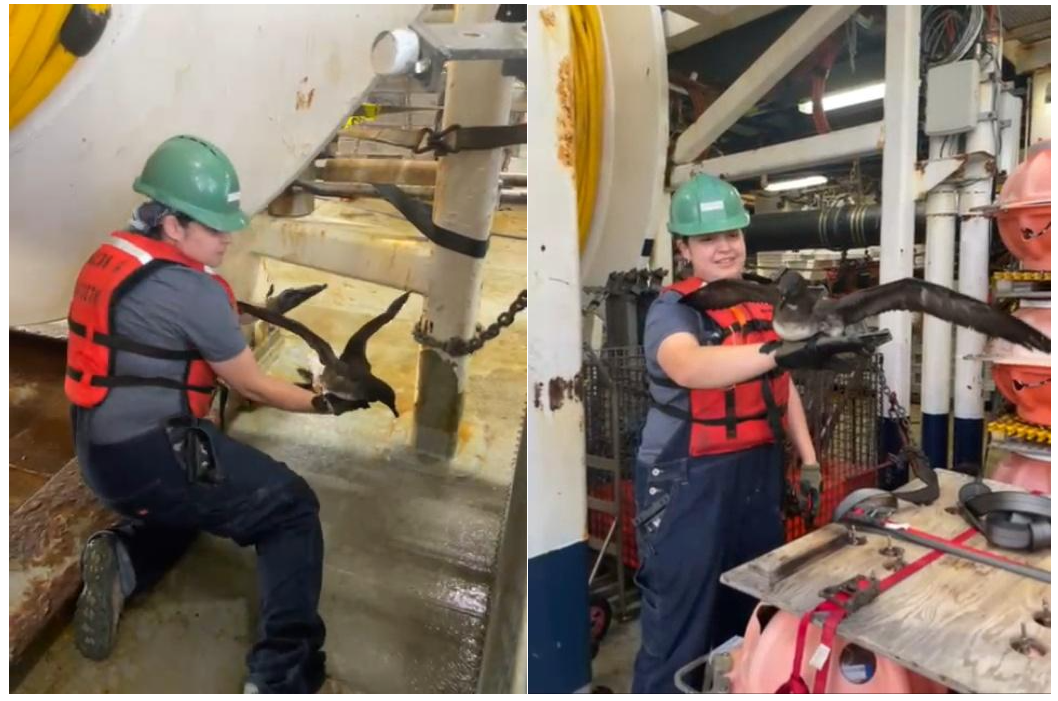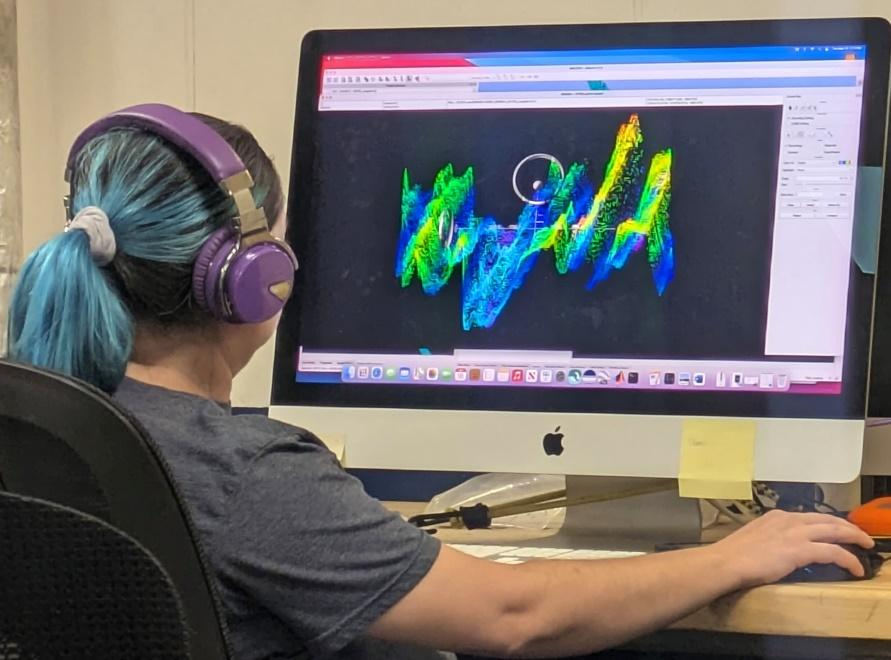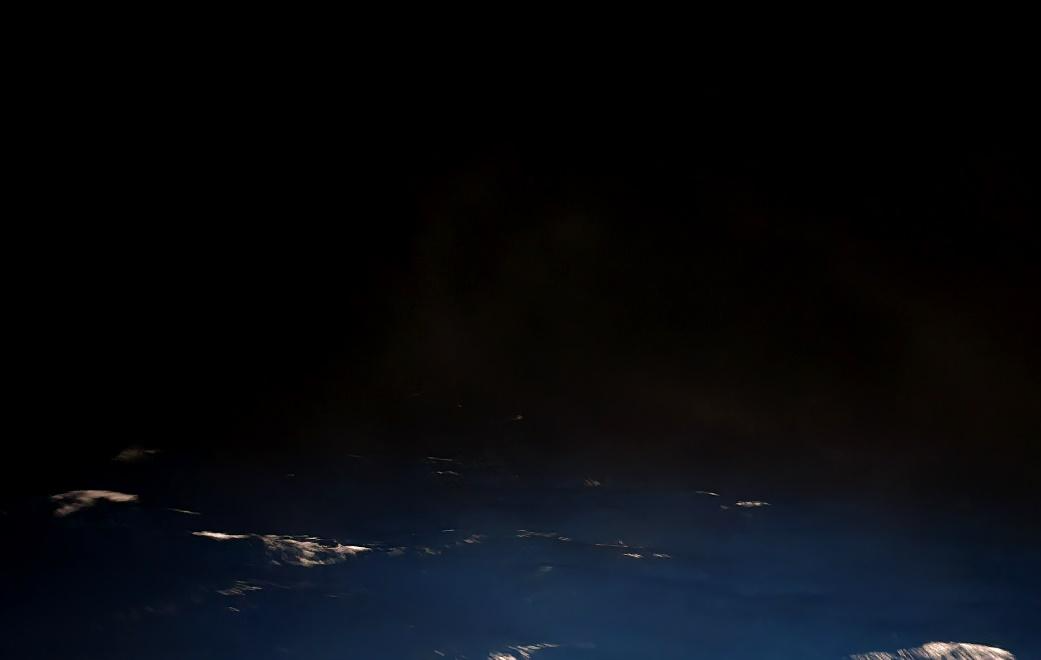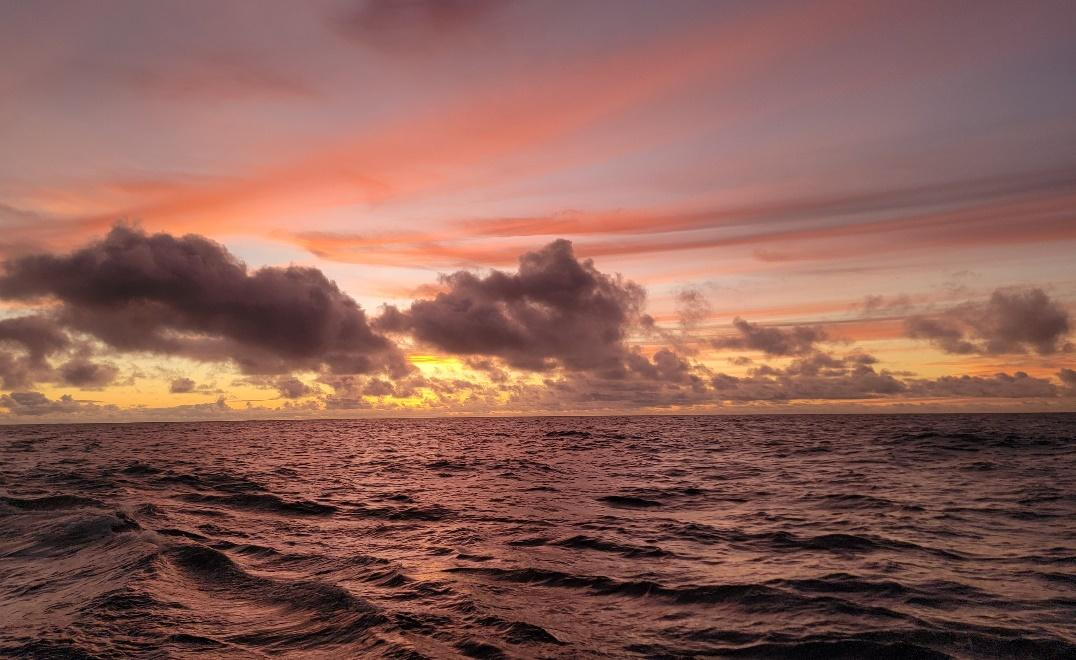Life Aboard
Grand is the ocean before me
So vast is the sea, intimidatingly—
I once feared the thought of mere me
Floating through the ocean, endlessly…
Now I see beauty in the deepest blues,
And the wildlife as my heart’s muse.
Seabirds sail across the sky;
Among them, my soul can fly.

I had the honor of helping a bird (Tahiti petrel). As Kenni and I walked to the stern to watch the sunset, she spotted a trapped bird flailing between a beam and a large spool that holds streamers. I reached down and lifted the bird out. After resting with us a while, Dan (WHOI Senior Engineering Assistant) carried the bird up to the streamer deck for a successful release. I’m happy to report with Dan’s send-off, the bird flew off to rejoin their flock hanging out nearby. Tahiti petrels are classified as near threatened. To those who wonder if I named this Tahiti petrel, I did not. It is my point of view that I have no right to name a wild and free animal. It was only our duty to help as our presence inadvertently put this bird in danger.
Being a prior service veteran, I am accustomed to working with groups of people who I didn’t know beforehand. I wasn’t sure what to expect from the science party or the crew as a whole. The majority of the grad students in the science party are geophysicists who are associated with the Primary Investigator’s lab group located at UC Santa Barbara. I am a PhD candidate from Louisiana State University and am here because there were a couple of junior scientist positions open, and I applied. It has been a long-time aspiration to sail aboard a research vessel and be a part of a science party. However, I am an igneous petrologist and hard-rock geochemist, and this mission does not include rock sampling. Even so, I found that being a geologist from an adjacent field has proved beneficial for collaboration. As my master’s advisor said, “the best geoscientists are [those] who can do and understand both [Geology and Geophysics].” I’ve been able to provide insights on mid-ocean ridge morphologies, crustal accretion processes, and oceanic rock types (ranging from crustal to mantle) while also learning about different types of geophysical methods, data collection, and how geophysical studies can complement geological perspectives. I am very grateful to be a part of the science party, and I’ve been fortunate to be among people who have provided a sense of community. I hope this can open the door between us for collaborative studies and maybe even future joint missions.
Of the new skills I’ve acquired, assembling Ocean Bottom Seismometer (OBS) packages is my favorite. I enjoy working with my hands and using tools, so this is right up my alley. Recently, an issue during a deployment required us to quickly reassemble a new OBS package. Because we were relatively close to the drop location, that experience demonstrated to myself how much I had learned since I was able to think fast and swiftly assist the technicians.

When I’m not helping with the OBSs, I’m usually processing multibeam data which mostly consists of removing scatter. While a somewhat tedious task, the bigger picture is contributing to the mapping of previously unmapped seafloor, and in a significantly better resolution than satellite data can provide.

I’m on the 14:00-22:00 shift, and most of our deployments have been at night. We’ve had the fortune of seeing jellyfish, flying fish, and eels that are attracted to the lights on deck where we assemble and deploy the OBSs. Looking beyond that area, vast darkness consumes as far as the eye can see. It brings a humbling sense of the reality of where we are.
The sky meets the sea, endlessly
Darkness is all I see in front of me…

I don’t want to end on a dark note. There are multiple perspectives and endless aspects to appreciate. I’ve seen some of the most beautiful sunsets, have heard some of the most interesting stories from technicians, and shared in light-hearted conversations with the crew. I may not be the most talkative person, but I appreciate good company. The inclusion and acceptance among people from diverse backgrounds provides enrichment that is unattainable otherwise. Everyone contributes to the success of the mission. Every person is significant. By working together, we do more than cooperate; we empower one another.

Closing with a poem:
“Timelines”
Lives intersect along peculiar paths.
Though, consistency is yet to last—
Share a point, a place in time;
briefly, converging along a line…
Signing off,
Crystal Luna
P.S. More info on Broadband OBSs to come in our next blog which will be posted by Kavi!